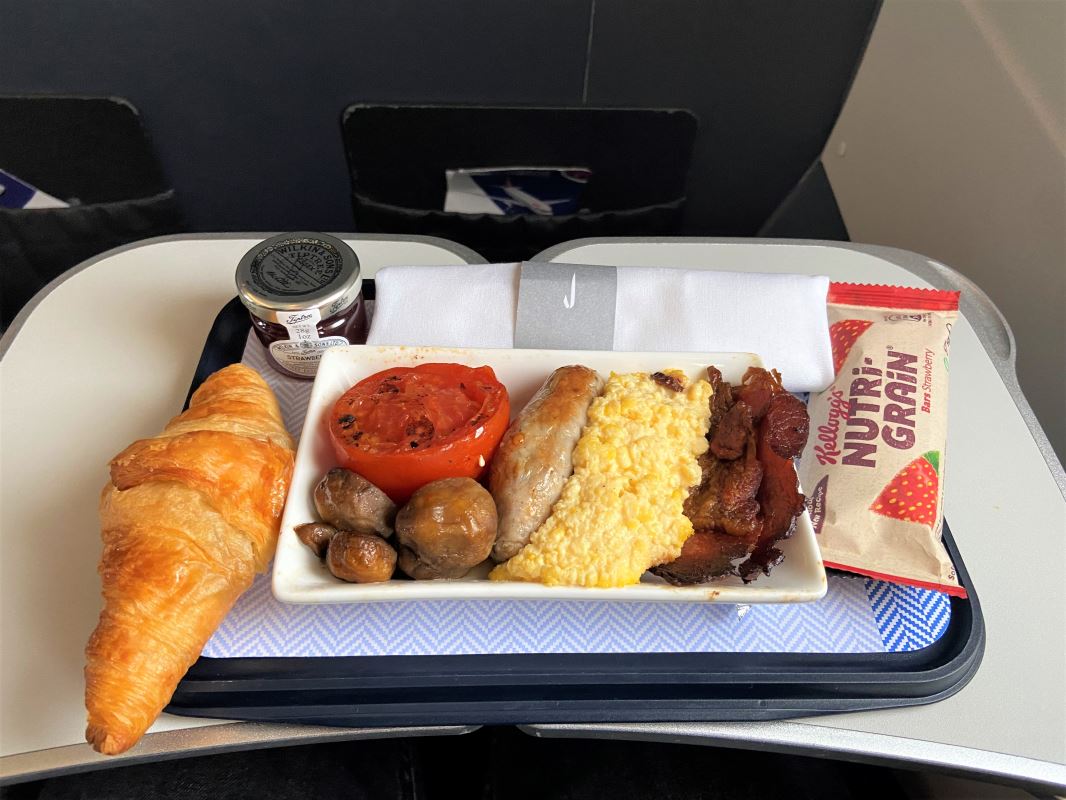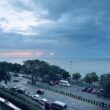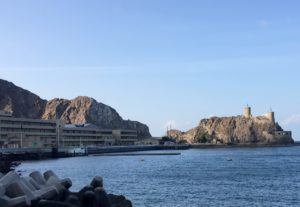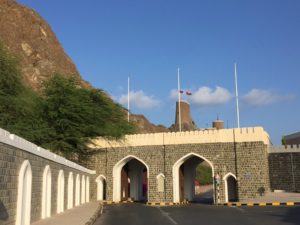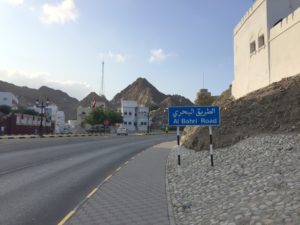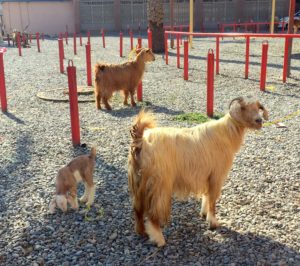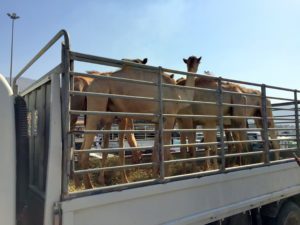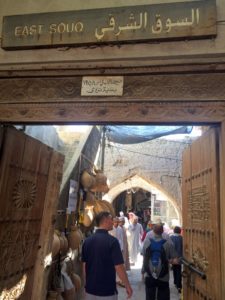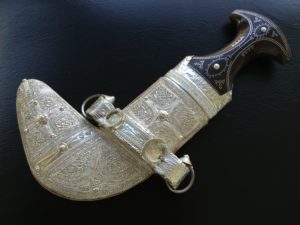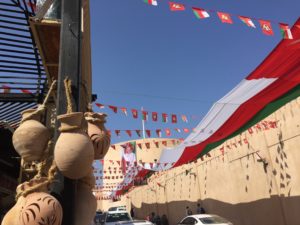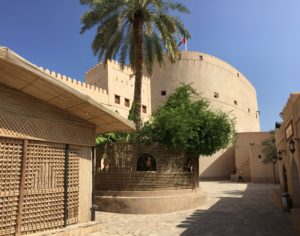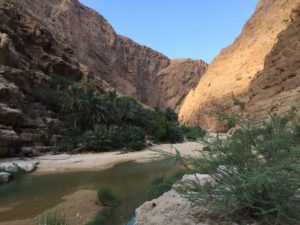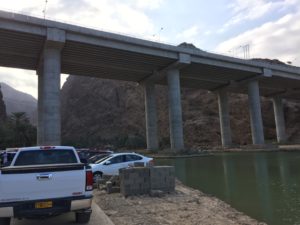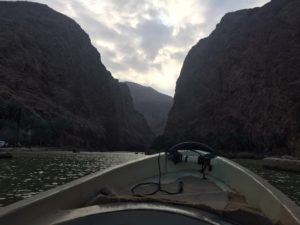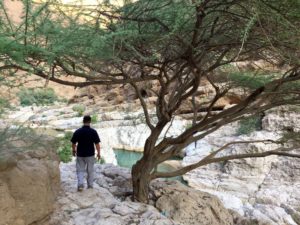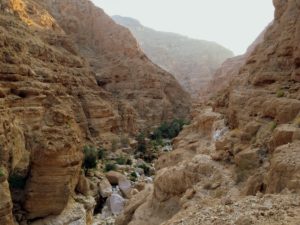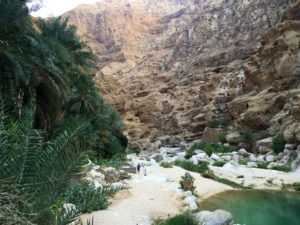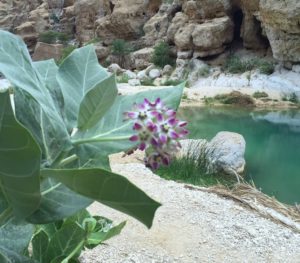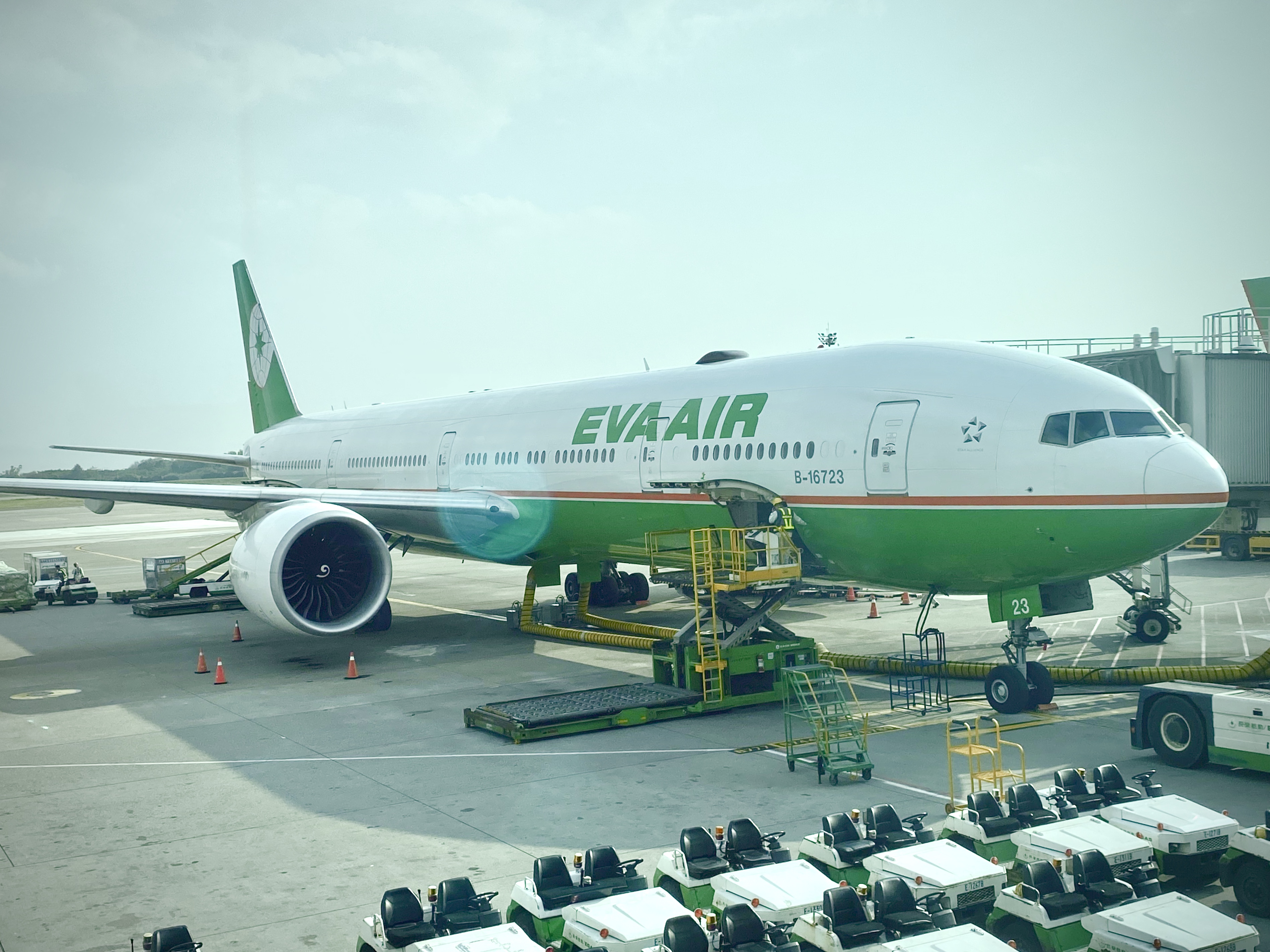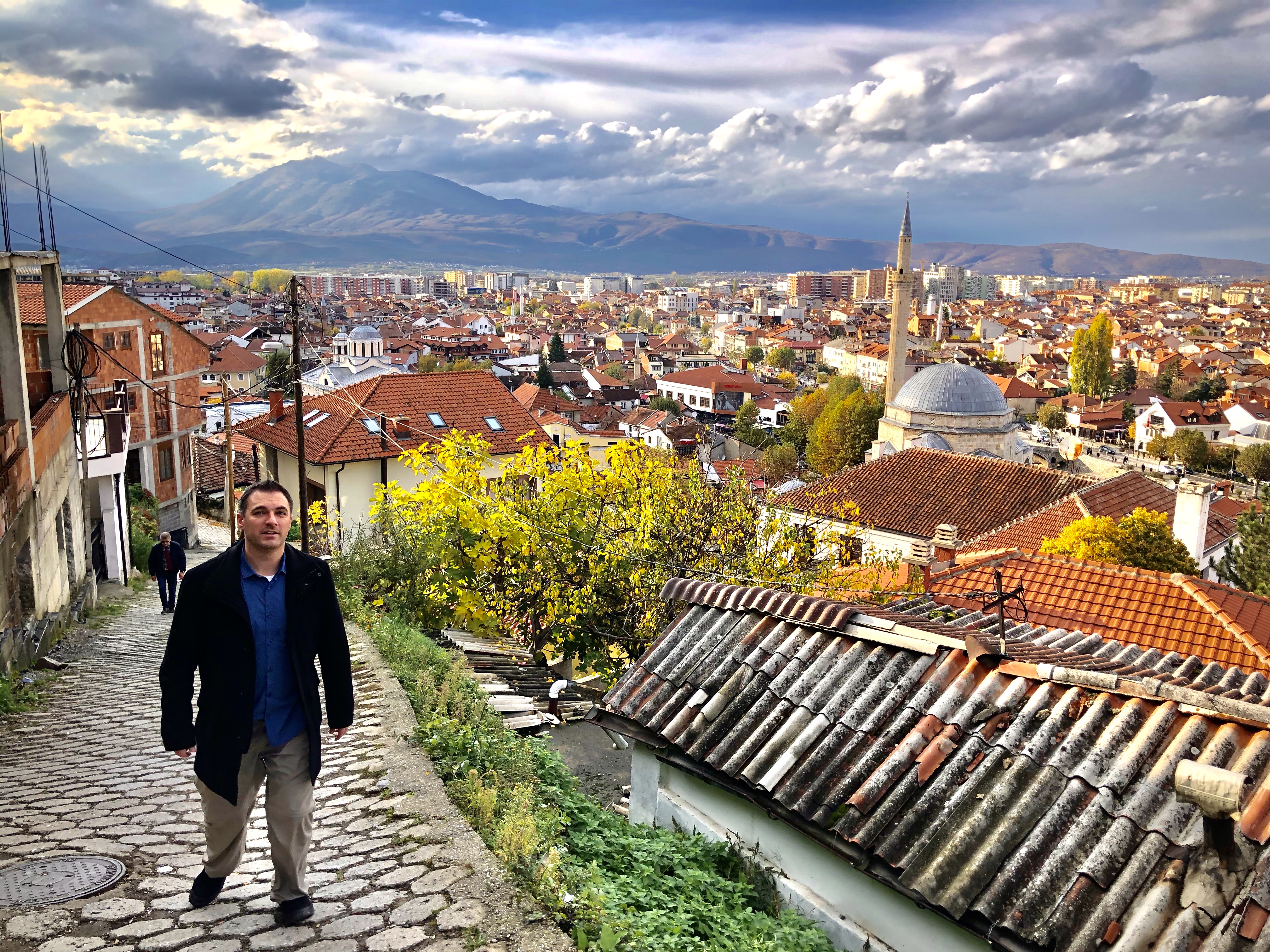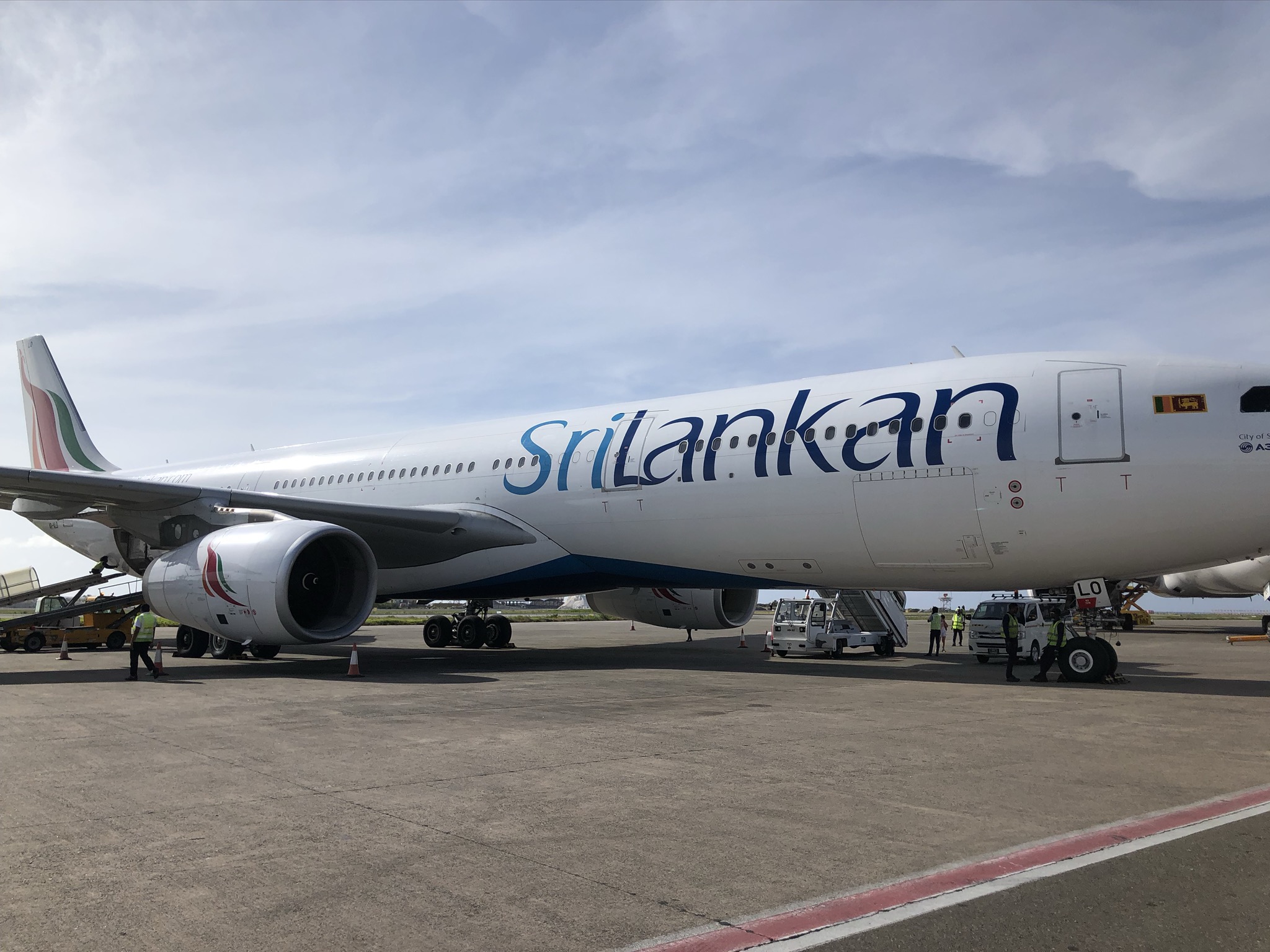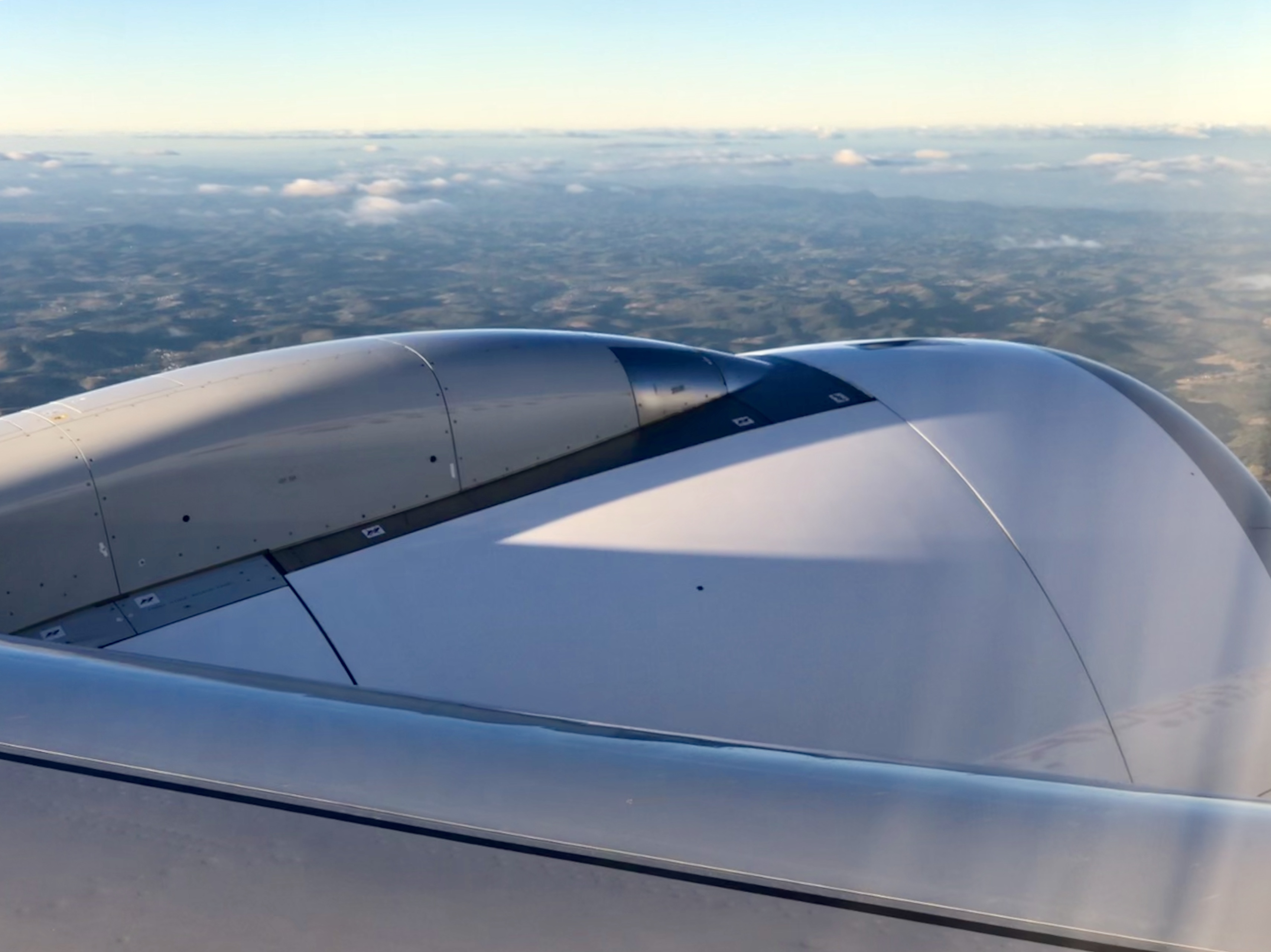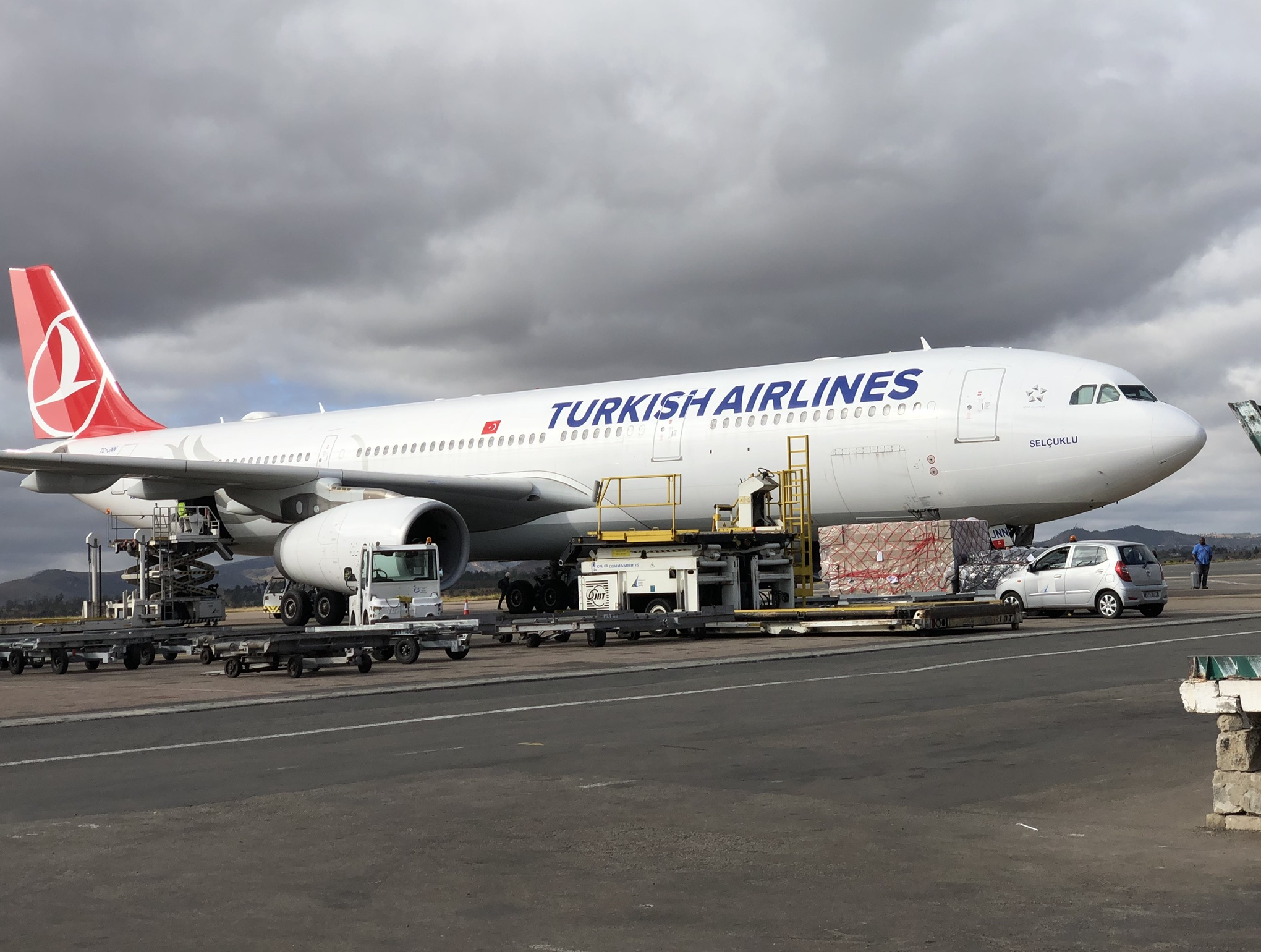Introduction
This Muscat travel guide is from my first stop on my seven country trip in Oman, a country located near Saudi Arabia, UAE, and Yemen. I had only two days to explore this country and a lot of options to choose from. I was hoping to use a private tour guide since that’s usually the best way to see many things in a short period of time. Since the tour guides were expensive in Oman, I decided to instead rent a car and drive around to the popular tourist sights near Muscat.
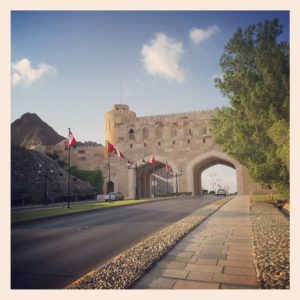
Unlike Dubai where its mostly sandy desert with skyscrapers, Oman was mountainous, less crowded, and had more of an authentic feel. Also, the various attractions worth seeing near Muscat were a few hours drive in different directions and because of this, I saw much less than I anticipated since I spent a lot of time driving. No worries about gas prices though, after all the driving I did, it only cost me $6 USD to fill the tank back up since fuel prices are so cheap here in this oil producing country.
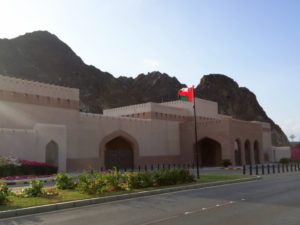
Places to Stay
While there aren’t as many hotel options as Dubai, many of the popular hotel chains are available to book using points in Muscat. IHG, Starwood, Ritz Carlton, Radisson, Wyndham, and Hyatt all have properties near Muscat and point redemptions are relatively low providing a great value for point redemptions. I stayed at the Grand Hyatt which charges 15,000 points or 7,500 Points + $100 for a standard room that normally goes for around $250.
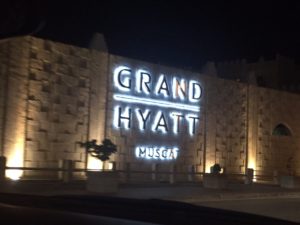

Things to Do
There were many things I didn’t get to do since the attractions were a bit spread out and driving around was time consuming. Also, my trusty offline GPS map app “Sygic” on the iPhone wasn’t working all too well in Oman so, I got lost a few times. With only two days, I still managed to tour various forts, souks, the nearby town of Nizwa, and hike the Wadi Shab oasis.
Old City of Muscat
The old city center is located along the coast and has forts, parks, shopping, the souq muttrah, the royal palace, plenty of restaurants, museums, and friendly locals.
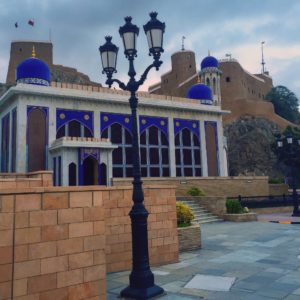
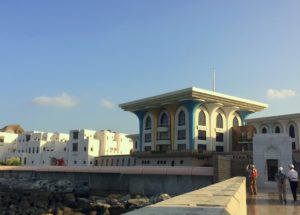
The Al Alam Royal Palace is flanked by two 16th century Portuguese forts.
16th century Portuguese Fort
Mathaib Gate
Driving in Oman is no problem since signs are and English and roads are not too crowded. Just be sure to use a good GPS program or download local offline maps from google maps.
Nizwa Souk
Coming from the land of chain stores, one of my favorite things to do while traveling is going to local markets. These markets usually sell items locally grown or crafted which is great way to see what the locals are eating or buying.
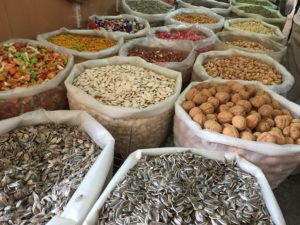
Various nuts and seeds
When I first arrived, they were finishing up the morning auction for cattle. I had heard this is an interesting thing to see but I got lost on the way to Nizwa and missed the auctioning of cattle.
Loading up newly purchased camels
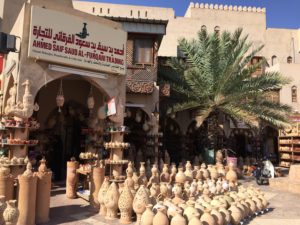
Omani pottery
Walking around the Souk with locals and German tourists, which seem to be everywhere I travel.
There are many traditional hand made daggers for sale called Khanjar which are primarily used for ceremonial purposes. They vary from plastic and copper materials to Gold and Silver. After much haggling, I bought a silver plated Khanjar with the handle made out of camel bone. Haggling over price is common place here so brush up on your negotiating skills.
Just about every building and car I saw had the Oman flag on display.
Nizwa Fort
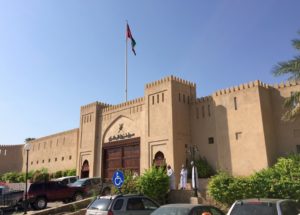
Built in the 1650s, the Nizwa fort is Oman’s most visited national monument and is about 90 minutes drive from Muscat. This is well worth the drive as walking around this large complex is like walking back through time.
The fort was built above a subterranean stream that provided a permanent supply of water in case of a prolonged siege.
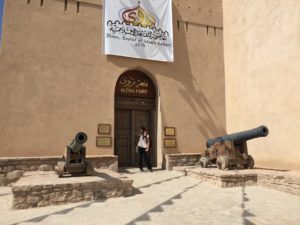
Two cannons are at an entrance of Nizwa fort. One is a cast iron Swedish Finbanker from the 18th century and the other is a 16th century a bronze Portuguese cannon. Located elsewhere is a cannon from Boston given by the US ambassador in 1840.
The fort holds many exhibits and artifacts on display which illustrates the history of Nizwa and how it used to be the capitol of Oman.
Wadi Shab
About 90 minutes drive south of Muscat is the dramatic narrow mountain ravine called Wadi Shab. After driving for so long in the barren dry desert, its great to see lush greenery, beautiful turquoise pools, and water falls.
There are plenty of signs that tell you when to exit for Wadi Shab. Park under the ugly highway overpass.
A small boat takes you across the water before you can start the hike. The cost if about $2 round trip.
The hike takes about an hour to reach all the beautiful pools where you can go swimming or just hang out and enjoy the view.
Bring plenty of water since its easy to get dehydrated climbing over the many boulders.
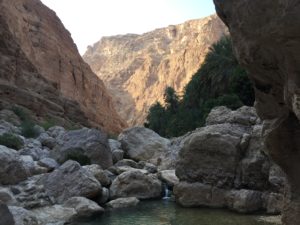
Hike just after sunrise or before sunset to avoid the heat.
There was a good mix of tourists and locals swimming in the pools.
Flowering Giant Milkweed toward the end of the hike.
Things I didn’t get to do in Oman:
Conclusion
Oman is a worthwhile destination that features beautiful beaches, 16th century forts, excellent shopping, stunning mountains, unique hikes, and a culture full of tradition and history. Staying for a few days is not enough time to see all the many sights. Oman is much more than just a resort location like Dubai. Hopefully, I’ll get another chance to explore this country further someday. Stay tuned for part four of this trip where I review the Etihad Business class flight from Muscat to Saigon.

